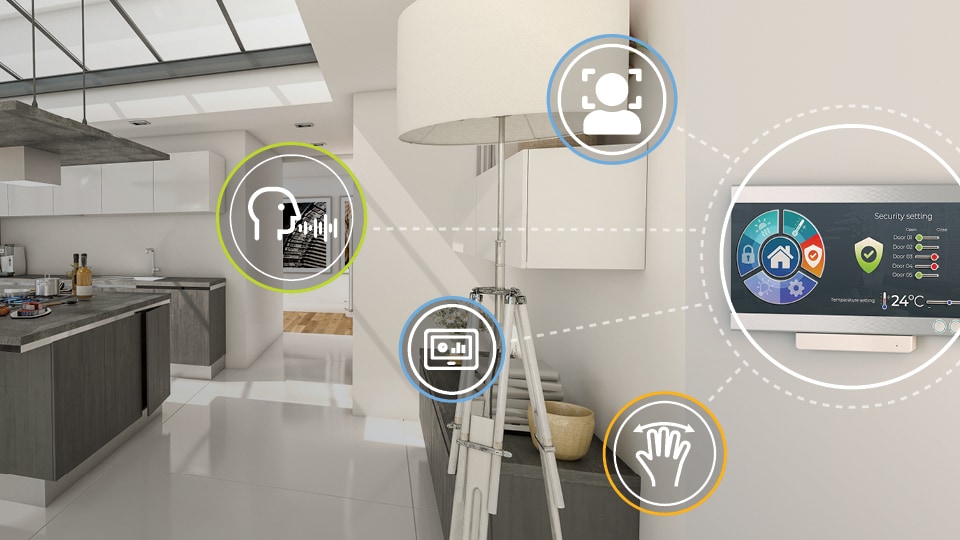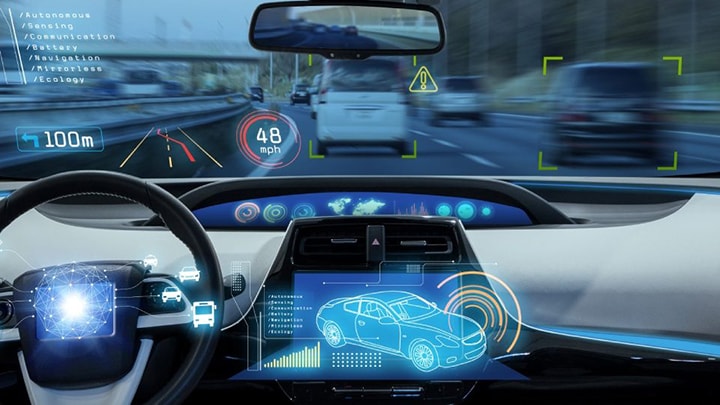Medical devices – traditionally boxy, beeping machines with complex interfaces that are seldom easy or intuitive to operate –
are receiving a much-needed makeover. The global digital health market is expected to reach USD $430.52 billion by 2028 (source:
Vantage Market Research), and with this growth comes the demand for a better user experience and friendlier graphical user
interfaces (GUIs).
In today’s smartphone app-driven world, we’ve grown accustomed to the “tap-swipe-and-go” ease and convenience of icon-rich
touchscreen interfaces. We expect similar smartphone-style interfaces for the myriad mobile and IoT devices that permeate our
digital lives. More products than ever before include GUIs and touchscreens, and end users have a growing expectation that these
interfaces be visually appealing and intuitive to use. Increasingly, this expectation applies to the medical devices used in
hospitals and clinics by practitioners, and at home and on the go by patients.
Faster, easier-to-use device GUIs can even be a medical imperative. Clinical practitioners sometimes have only seconds to take
life-saving actions in a medical emergency, and a cumbersome device interface could cause a delayed response when time is of the
essence.
How can we ensure that the various diagnostic, monitoring and treatment devices nurses and doctors use on a daily basis are
quick and simple to use? By designing them with sleek, modern user interfaces with the look and feel of a smartphone
touchscreen.
That's where the collaboration between Altia and NXP comes into play. Leveraging NXP’s
portfolio of applications processors and microcontrollers, Altia helps developers create advanced GUIs that are turning intimidating medical devices into friendlier machines with
familiar, intuitive interfaces that are easier to operate.
From insulin pumps, to patient care monitors and ablation systems, among other devices, Altia has been actively driving display
innovation for production medical devices for more than 15 years. The company’s GUI solutions are popular among four of the top
five medical device companies in the world. In fact, Altia software is deployed in 30 percent of the insulin pumps used
worldwide.
Overcoming Cumbersome Medical Device Interfaces
A subset of user interfaces (UI), GUIs are widely used in touchscreen devices that have become commonplace across many
industries and applications, from smartphones to industrial control displays to automotive infotainment systems. GUIs are
generally more user-friendly than text-based interfaces because they use familiar icons, cursors and universally recognizable
symbols. Instead of typing an instruction on a device UI panel, users simply click on or touch an icon or symbol to activate a
given function.
GUI features can be particularly useful in clinical settings where medical devices must be safe, certifiable and easy to
operate. Practitioners require a solid mastery of medical equipment, while point-of-care devices should be straightforward to
use, enabling patients to manage their own data and dosages. For both healthcare practitioners and patients alike, the more
intuitive a device interface is, the better the user experience. Ultimately, access to well-designed and easy-to-use medical
devices will not only simplify and streamline the practitioner’s work but also can help improve the quality of care.
Design constraints must be addressed to fully realize the benefits of GUIs for medical applications. Depending on the use case,
this includes enabling developers to design medical device GUIs faster and at lower cost while satisfying the latest regulatory
and safety feature requirements. Another constraint involves identifying the best ways to design and deploy GUIs for
high-reliability devices while ensuring rapid prototyping among patients, doctors and clinical management during the early
stages of development to allow user experience testing and GUI flow and behavior assessments.
Leverage Altia’s GUI Software and NXP’s Processors and MCUs
Altia provides UI development software and services that simplify the production and deployment of “pixel-perfect” GUIs for
embedded devices used across multiple industries. In fact, Altia software is designed into more than 100 million devices around
the world.
Working together, NXP and Altia are helping to deliver user-friendly graphical experiences for medical devices. Altia provides
the GUI software for embedded displays that enable end users to interact easily with medical devices while NXP provides the
processing platforms that enhance the performance and functionality of the displays. Altia software supports a wide range of NXP
hardware platforms including i.MX 8 and i.MX 9 Series applications processors,
i.MX RT1160, i.MX RT1170,
i.MX RT1060 and more.
NXP’s broad portfolio of i.MX applications processors, MCUs and crossover MCUs addresses a variety of graphics applications.
From simple yet powerful GUIs to advanced, graphically rich interfaces, NXP offers processing solutions to meet every design
requirement. While most NXP processors and MCUs can support simple GUI peripherals, several device families are designed
specifically for graphics applications with integrated features such as pixel processing pipeline (PXP) technology for 2D
acceleration and built-in display interfaces and controllers.
Altia DeepScreen software quickly converts models and prototypes into deployable graphics code. The Altia DeepScreen code
generator automatically delivers GUI code within seconds with optimized performance and the smallest footprint for a wide range
of NXP
microcontrollers (MCUs),
applications processors and
crossover MCUs
based on their unique features and capabilities. The generated code is small, efficient and fine-tuned for each target operating
system. Developers can generate code for commercial and custom RTOSs or even no RTOS at all, shaving months and even years off
of development schedules.
Altia Design is a full-featured user interface design, simulation and model integration environment. It enables developers to
build high-fidelity, functionally complete prototypes and GUIs for NXP MCUs and processors. Using Altia Design software,
developers can create accurate simulation models to test code, algorithms, concepts and systems. Models generated with Altia
Design can be easily integrated with third-party tools or custom application code.
Create Medical Devices with Easy-to-Use Interfaces
The combination of Altia’s software and NXP processor and MCU platforms accelerates the development of GUI-enabled medical
devices, from initial concept to final production. Using Altia software, graphic designers who excel in storyboarding can
execute their stories and designs onto hardware platforms quickly and easily, minimizing production delays and loss of fidelity.
Embedded engineers can also use Altia’s enablement tools to create and manage the graphical and behavioral aspects of device
displays. Project managers benefit from faster time-to-market in designing device displays and achieving brand compliance.
Medical device GUIs based on Altia software can be easily adapted without having to start a design from scratch. Existing models
can be leveraged while newly desired changes are implemented in the editor. Production-ready C code tailored to each type of NXP
processor or MCU is easily traceable, which helps device makers adhere to relevant regulations.
The success and safety of modern medical devices are closely linked to the quality and functionality of user interfaces. For
this reason, easy-to-use GUIs and touchscreen interfaces are becoming increasingly commonplace in medical settings, from
operating rooms, to patient rooms, at home or on the road. Whether for hospitals or home use, Altia delivers medical device GUI
solutions that provide the high reliability user experience that healthcare practitioners and patients need.
Together, Altia and NXP provide a powerful combination of software and hardware solutions that enable developers to create
simple, safe and certifiable GUI designs.
Altia and NXP collaborate to provide user-friendly GUIs for medical devices. Learn more about the
partnership.
About Altia
Altia specializes in graphical user interface (GUI) development software and services for the production of embedded displays.
Designed into more than 100 million devices worldwide, Altia software enables companies in the automotive, medical, consumer
electronics and industrial device industries to get first-class GUIs into production quickly on embedded devices. The Altia
toolchain includes an integrated, efficient and easy-to-use workflow with advanced 3D capabilities, global language support and
much more. The Altia Professional Engineering Services Team delivers global support across the GUI development lifecycle, from
graphics development and user experience research to testing, functional safety certification and production.




